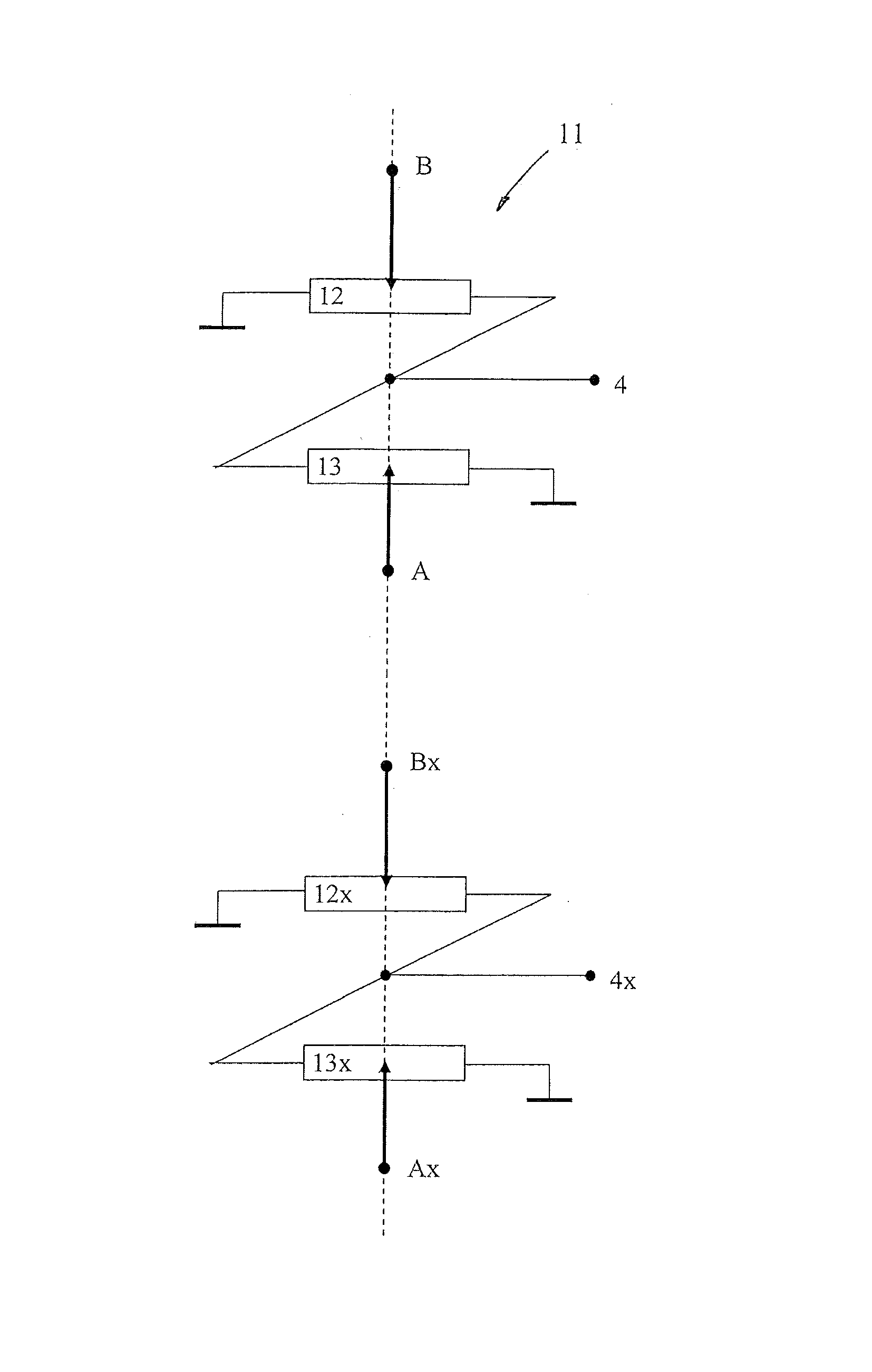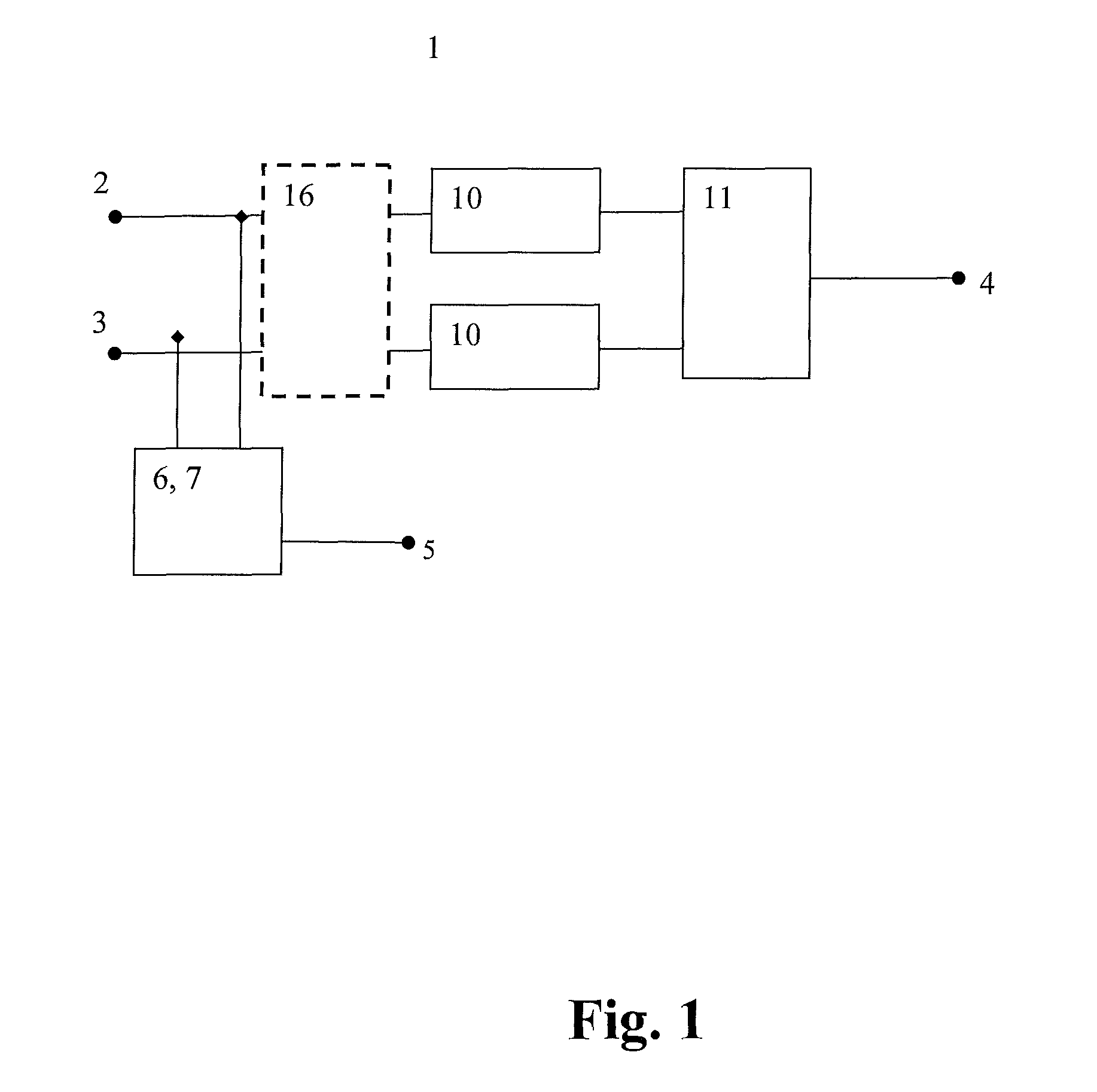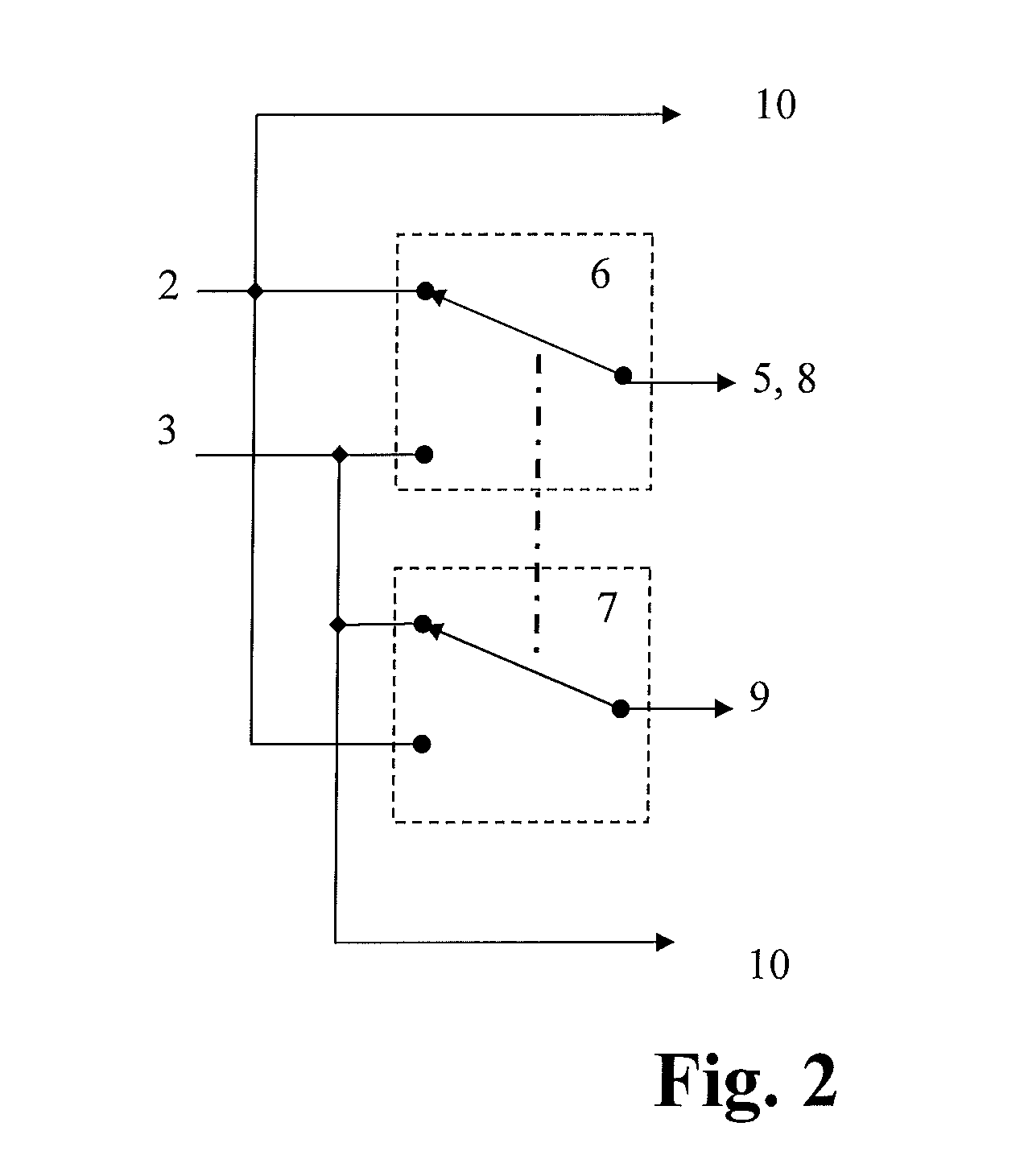Mixing board for audio signals
- Summary
- Abstract
- Description
- Claims
- Application Information
AI Technical Summary
Benefits of technology
Problems solved by technology
Method used
Image
Examples
Embodiment Construction
[0049]FIG. 1 shows the signal flow in the passive mixing board 1. As a comparison, FIG. 9 contains an analogous illustration for a conventional mixing board.
[0050]The sound signals received on the channels 2, 3 are headphone output signals of players.
[0051]The received signal of the relevant channel 2, 3 is divided by means of circuitry and passed on to the outputs 4, 5 in parallel and without amplification, wherein said signal is passed on[0052]a) through a passive transformer 16, a passive sound filter 10 and subsequently a passive cross-fader 11 to the output 4 to the amplifier of a loudspeaker system, and[0053]b) via a switch 6, 7 of the relevant channel 2, 3 to a headphone output 5 of the mixing board 1, wherein the channels 2, 3 are selected by means of the switches 6, 7.
[0054]FIG. 2 shows a switch combination for a headphone signal at the output 5. The switches 6, 7 of the channels 2, 3 are coupled to each other in such a manner that the switch 6 can supply a signal to the he...
PUM
 Login to View More
Login to View More Abstract
Description
Claims
Application Information
 Login to View More
Login to View More - R&D
- Intellectual Property
- Life Sciences
- Materials
- Tech Scout
- Unparalleled Data Quality
- Higher Quality Content
- 60% Fewer Hallucinations
Browse by: Latest US Patents, China's latest patents, Technical Efficacy Thesaurus, Application Domain, Technology Topic, Popular Technical Reports.
© 2025 PatSnap. All rights reserved.Legal|Privacy policy|Modern Slavery Act Transparency Statement|Sitemap|About US| Contact US: help@patsnap.com



